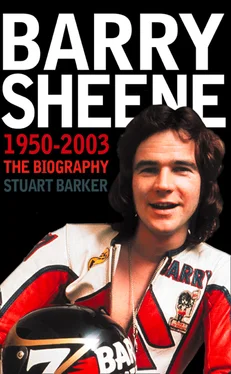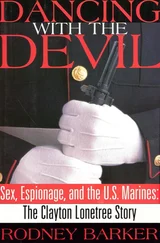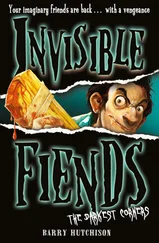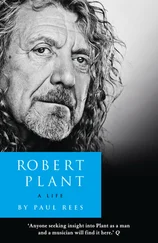1 ...6 7 8 10 11 12 ...15 John Cooper remembered watching – sometimes from trackside, sometimes on the track – as the young Sheene progressed. ‘Initially Barry was like everyone else. He came up through the ranks in 125s and 250s, but he was always a good rider. At one point I had a 250cc Yamsel [a Yamaha engine in a Seeley frame] and he had a 250 and 350cc Yamaha so we often raced each other and he used to say to me, “I wish you’d bloody pack up and give me a chance.”’ Sheene didn’t get his chance until 1973 when Cooper retired after almost 20 years of racing. ‘Barry’s career just overlapped mine. When I finished racing he became really good. But he did ride my Yamsel a few times in the early seventies if I wasn’t using it just because it was a particularly good bike. He couldn’t beat me when I was on it really because his bikes were fairly standard at the time, but then he got the works Suzuki 500 and by then I had packed up and Barry just went from strength to strength.’
One week before that Spanish Grand Prix, Barry entered a big Spanish International event and actually managed to beat the current World Championship leader, the Spaniard Angel Nieto, to the great displeasure of the partisan crowd. It’s worth noting that big one-off international race meetings for bikes have now all but disappeared, but in the seventies there were many big-money meets which attracted all the best riders, and a win in one of those was equivalent to a Grand Prix win by virtue of the fact that all the GP competitors were entered in the race. They were also financially profitable, as Sheene explained in the 1975 Motor Cycle News annual. ‘At a Grand Prix, I could make between £200 and £500 for one start, but at a non-championship meeting in France, say, I could ask for over £2,000 – and get it.’ The risk of injury in non-world championship events eventually heralded their demise in the eighties; for sponsors, manufacturers, riders and teams, the World Championship had to come first and they actively discouraged their contracted riders from taking part in any other events.
Sheene’s Spanish win was just what he needed before making his Grand Prix debut, and only a small misjudgement in the setting up of his bike robbed him of the chance of winning that race too. He had been only half a second slower than Nieto in practice despite never having ridden the Montjuich Park circuit before, but his bike was slightly undergeared and Nieto won by eight seconds, with Barry a huge 40 seconds ahead of the third-placed rider Bo Jansson. It was a sensational debut, and also the start of a great friendship between Sheene and Nieto, who would play a big part in helping Barry learn Spanish. He later learned to speak Italian and French as well, to varying levels of fluency, allowing him both to read what was written about him in the bike press of those countries and to conduct interviews with their media – always a popularity booster when very few Brits bothered to learn a second language. Sheene’s Japanese was not as good, but it too proved invaluable over the years when dealing with his Japanese employers Suzuki and Yamaha and their respective mechanics.
Sheene also had his first ride in the premier 500cc class at the Spanish Grand Prix that weekend, although his debut cannot be taken too seriously. Up against the mighty 500cc MV Agustas, Barry pitched his little (albeit overbored) 280cc Bultaco just for a bit of fun. Even so, he managed to work his way into second place in the race before the Bultaco seized, putting an end to his efforts. Barry’s first ride on a real 500cc bike came at Snetterton that same year when he raced a crash-damaged Suzuki 500 his father had pieced back together. For once, though, Barry didn’t have superior machinery, and it showed as he failed to set the world on fire and eventually retired from the race, but it was a start, and it marked the first time he’d ridden the kind of bike that would make him world famous.
With 1970 delivering the 125cc British Championship, a third place in the 250cc British series and a podium finish in his first Grand Prix, it was decided that nothing less than a full-on assault on the World Championship would suffice in 1971. The amount of travel and mechanical preparation required for such an effort necessitated Barry quitting all his little odd-jobs. From that point on, for better or worse, he would have to survive on whatever start money he could negotiate and whatever prize money he could win. He would be racing for survival.
Motorcycle Grand Prix racing today is a world of glamour and big money: multi-million-pound transporters and hospitality suites, worldwide television coverage, hosts of glamour girls pouting and posing their way through the paddock, luxury motorhomes for the riders to relax in and even more luxurious pay cheques with which to buy them. But in 1971 it couldn’t have been more different, especially for a newcomer like the 20-year-old Barry Sheene. Sheene himself would later play a leading role in adding such glamour to international paddocks, but his first full season was, as for most racers, a rough and ready, hand-to-mouth experience. There were no first-class flights to the far-off rounds; instead, Sheene and his mechanic Don Mackay took turns to drive Sheene’s newly acquired Ford Transit around Europe. Luxury hotels and restaurants were still some way off too, so the van doubled up as accommodation and kitchen – at least it did when there was something to cook, which for most of the time there wasn’t. Don was paid a wage as and when Sheene won any prize money, and a meal in a restaurant was a rare treat if the team had done particularly well. Sheene might have been the source of some envy in UK paddocks when he turned up with ultra-competitive bikes, but when it came to Grand Prix racing he was no more privileged than any other privateer.
Money was so tight at times that desperate and innovative measures were called for just to keep the show on the road. Sheene recalled a time when he had to ‘borrow’ some red diesel from a cement mixer in West Germany so that he could make it to Austria. When he got there, he asked the race organizer to up his starting fee from £30 a race because he needed money for food for the coming weeks. When the organizer refused on the grounds that no one knew who Barry Sheene was, Sheene offered a unique solution: if he could qualify in the top three in each of his three classes, he would be paid £50 each time; if he couldn’t, he would be paid only £20. The organizer, thinking he could save some cash, agreed, but he’d seriously underestimated Barry’s talents. Sheene got his £150.
Financial hardship aside, the year went remarkably well, Barry scoring a third place on the 125cc Suzuki at the first Grand Prix in Austria. He was also on the pace in the 250 and 350cc classes, but mechanical gremlins robbed him of any more finishes, as they did in West Germany, too. A look at the results sheets of Sheene or any other rider from that era will show just how many mechanical breakdowns a rider typically suffered in a season. To a modern-day GP enthusiast this will seem inexcusable; after all, aren’t top Grand Prix mechanics paid handsomely to prevent just such occurrences? Breakdowns are now so rare as to be a real talking point among paddock pundits and the press, but in the seventies they were still commonplace. Reliability has improved massively in the three decades since Sheene first hit the Grand Prix trail, and the money now being thrown at teams allows them to replace parts much more regularly, further lessening the chances of any technological mishaps. While Sheene might have suffered an apparently high number of mechanical hiccups, other riders did so too, so it all balanced out over the course of a season. The old points system, where riders could drop an allocated number of their worst results, further helped to create an even playing field.
Читать дальше












